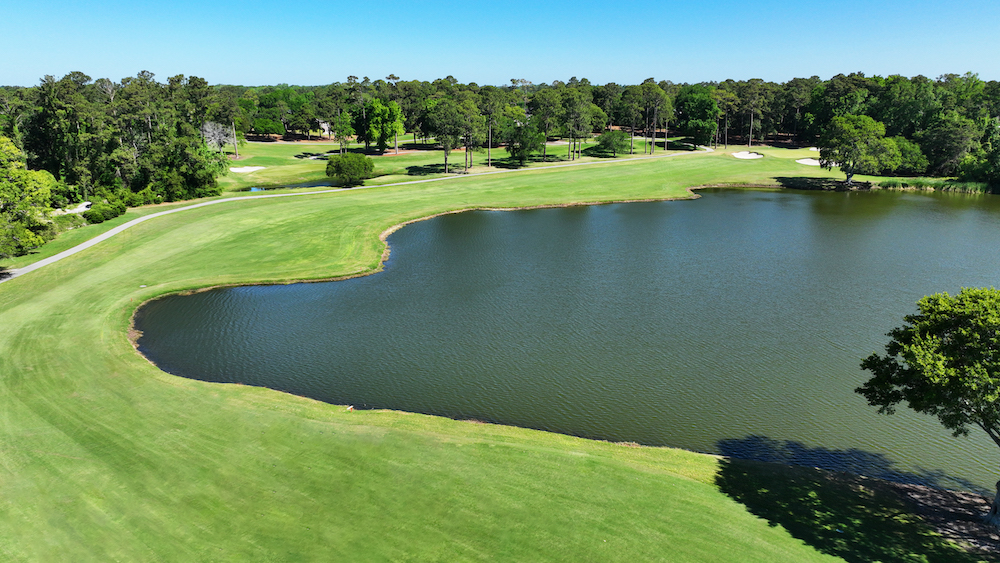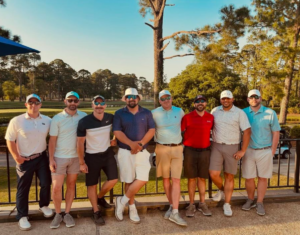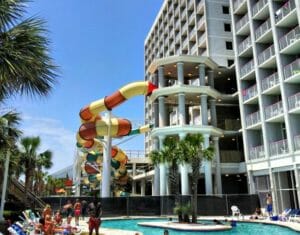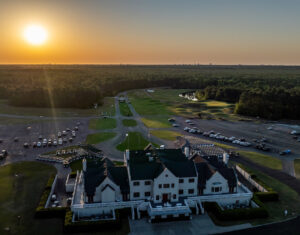Rymer: Keeping Up with the Joneses, and What the PGA TOUR’s Myrtle Beach Classic Field Can Expect at The Dunes Club in 2024
By Charlie Rymer

Like so many, I was thrilled to hear that the PGA TOUR has finally made its way to Myrtle Beach. After all, we are “The Golf Capital of the World.” I think there are quite a few courses in Myrtle Beach that are capable and worthy of hosting a PGA TOUR event. I also think that going to The Dunes Golf & Beach Club is a great call. Along with being the second-oldest golf course in Myrtle Beach it has notable architecture, plenty of length, remarkable conditioning, lots of room to accommodate fans and infrastructure, and is centrally located.
I recently spent time with my good friend, Rees Jones. His father, Robert Trent Jones, was the original architect of The Dunes Club and Rees has recently renovated the bunkers on the course. Rees will also be consulting with any changes that need to be made to the course for the event.
 Robert Trent Jones was one of the most prolific and respected golf course architects in the history of the game, and The Dunes Club is a wonderful example of his work. Big. Bold. Beautiful. His courses are characterized by large and deep bunkers with sand splashed up into the faces. Rees, a legend in his own right, lovingly restored those bunkers in a way that would make his father proud.
Robert Trent Jones was one of the most prolific and respected golf course architects in the history of the game, and The Dunes Club is a wonderful example of his work. Big. Bold. Beautiful. His courses are characterized by large and deep bunkers with sand splashed up into the faces. Rees, a legend in his own right, lovingly restored those bunkers in a way that would make his father proud.
I had a chance to meet Robert Trent Jones when I was 15 years old. I was playing the Big “I” Insurance Youth Classic National Championship at Otter Creek Golf Course in Columbus, Indiana. It was the coolest course I had ever seen. Robert Trent Jones came out to watch us kids play. He was very approachable, and I got to speak with him for a few minutes. He was kind, engaging, and remarkably asked me a few questions. It was very evident that he was a true gentleman. With Rees Jones, it’s also very evident that the apple doesn’t fall far from the tree.
For nearly every PGA TOUR player in the field, this event will be their first look at The Dunes Club. Trust me, figuring out a golf course in just a couple of days is no big deal for a PGA TOUR player. Most golfers play 90 percent of their golf on the same course and simply can’t relate to this skill. Touring professionals can (and do) fly halfway around the world and instantly adjust to green speed and firmness, fairway grass type, rough grass type and height, sand type in bunkers, temperature, and altitude. Players can go from hitting a 7-iron at Pebble Beach 155 yards to hitting that same club 218 yards in Mexico City a week later. They make it look easy. It’s not.
I look forward to seeing what strategy the PGA TOUR players employ on several holes at The Dunes Club. The 4th hole is a really cool, risk/reward dogleg left par 5. Bunkers cross the middle of the fairway, and players will have to find the right line and club combination to put the ball in position for a go at the green in two. Water sits tight to the green. This hole will give up plenty of birdies and eagles – but also some bigger numbers.
The signature hole of The Dunes Club and its “Alligator Alley” is the par-5 13th. It was Robert Trent Jones, by the way, who coined the phrase “Signature Hole.” And he created a beauty on this par 5. It’s a big, sweeping dogleg right around a lake. In some places, trees are between the lake and the fairway. The key to going at this green in two is to find one of the places where those trees aren’t. Placing the ball near one of those gaps and dangerously close to the water will give a player a fighting chance to get home in two. But that second shot may require a driver off the deck over water. Alligator-infested water!
It’s going to be great fun seeing how PGA TOUR players attack The Dunes Club. It’s also going to be fun seeing how The Dunes Club attacks them.



